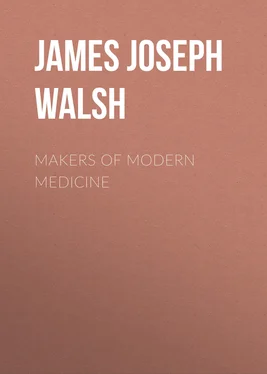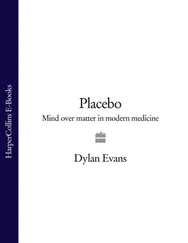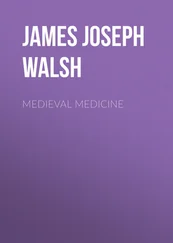James Walsh - Makers of Modern Medicine
Здесь есть возможность читать онлайн «James Walsh - Makers of Modern Medicine» — ознакомительный отрывок электронной книги совершенно бесплатно, а после прочтения отрывка купить полную версию. В некоторых случаях можно слушать аудио, скачать через торрент в формате fb2 и присутствует краткое содержание. Жанр: foreign_prose, Медицина, foreign_antique, на английском языке. Описание произведения, (предисловие) а так же отзывы посетителей доступны на портале библиотеки ЛибКат.
- Название:Makers of Modern Medicine
- Автор:
- Жанр:
- Год:неизвестен
- ISBN:нет данных
- Рейтинг книги:3 / 5. Голосов: 1
-
Избранное:Добавить в избранное
- Отзывы:
-
Ваша оценка:
- 60
- 1
- 2
- 3
- 4
- 5
Makers of Modern Medicine: краткое содержание, описание и аннотация
Предлагаем к чтению аннотацию, описание, краткое содержание или предисловие (зависит от того, что написал сам автор книги «Makers of Modern Medicine»). Если вы не нашли необходимую информацию о книге — напишите в комментариях, мы постараемся отыскать её.
Makers of Modern Medicine — читать онлайн ознакомительный отрывок
Ниже представлен текст книги, разбитый по страницам. Система сохранения места последней прочитанной страницы, позволяет с удобством читать онлайн бесплатно книгу «Makers of Modern Medicine», без необходимости каждый раз заново искать на чём Вы остановились. Поставьте закладку, и сможете в любой момент перейти на страницу, на которой закончили чтение.
Интервал:
Закладка:
"Tom at last has laid by his old niggardly forms,
And now gives good dinners; to whom pray?–the worms."
"Determined much higher to hoist up his name,
Than Nimrod the hunter, in annals of fame,
'Hark forward!' cried Charles, and gallantly whirled
His high-mettled steed o'er the gates of the world."
"P.–Awhile forbear thy horrid gripe,
Do pray, dread Sir! remember
Peaches are never fairly ripe
'Till August or September."
"D.–To gratify my longing taste,
And make thy flavour fine,
I had thee in a hot-house placed,
And moistened well with wine."
"Mr. Peach had shortened his life by the too free use of the bottle."
We have said that Dr. Jenner's supreme accomplishment in science was the working out of the vaccination problem to a great humane conclusion. His discovery was no mere accident, nor chance confirmation of a medical tradition. He devoted himself for many years to the study of cowpox, as he had the opportunity to see it, and it is what we know of this investigation, his patience and care in eliminating all the factors of error, that stamped Jenner as a medical scientist worthy of honor. When he began practice in Berkeley, he made many inquiries among his professional brethren, with regard to their opinion of the protecting power of cowpox, but most of them had either paid no attention to such reports, or shook their heads at once, and said they were at most popular traditions, due merely to coincidences and unsupported by any credible evidence. In the face of this, Jenner began to follow John Hunter's advice to investigate. The first careful investigation dates from about 1775, and it took him more than five years to clear away the difficulties surrounding the solution of the question, in which he was interested.
As Pasteur found in the next century, when investigating the silkworm disease, Jenner soon learned that there was more than one disease called cowpox, and that the confusion consequent upon the existence of at least two specific diseases and a number of skin affections of the hands of various kinds, which existed among dairy workers, made the recognition of the protective power of true cowpox extremely difficult. After he had differentiated genuine cowpox, however, there was no difficulty in tracing its apparent protective power. He soon found, however, that the protection was not afforded unless the cowpox had been communicated at a particular stage of the disease. In other words, after the true vaccinia has run its course, secondary affections of the skin of the cows usually take place, and if dairy workers became infected from these lesions, then no protection against smallpox is afforded them. Another important observation that Jenner made at this time was that the disease known as grease in horses is the same affection as cowpox, and that both of these diseases are smallpox as modified by the organism in which they develop. It may be said at once that this opinion so difficult to arrive at, more than a century ago, when so little was known of comparative pathology, is held at the present day, and was confirmed by the last series of investigations made under the auspices of the Jenner Society, in England.
One difficulty that confronted Jenner in his researches was the fact that cowpox was scarce in his part of the country, and he had no opportunity of making inoculations with the disease in a proper stage, so as to put his suspicions to an absolute test. He collected much information, however, and stimulated others to the making of observations, so that when his discovery was announced the mind of the medical profession was more ready to receive it. In 1788 he carried a carefully made drawing of a case of cowpox as it occurred on the hands of a Gloucester milkmaid to London, and showed it to a number of medical men, whose opinions he wished to obtain. Among these was Sir Edward Holme, who agreed that there was a distinct similarity between it and certain stages of smallpox and considered that the question of a connection between the two diseases was an interesting and curious subject. He did not share any of Jenner's views, however, with regard to the practical importance of his discovery in this matter, and gave little encouragement to the idea that a possible prophylactic for smallpox might be discovered.
Something of Jenner's enthusiasm for experiment may be gathered from the fact that he did not hesitate even to inject various materials related to cowpox into the arm of his own children. We know Mrs. Jenner to have been a very wonderful woman, quite as deeply interested as the doctor himself in securing the great benefit to humanity that would result from the demonstration that cowpox protected against smallpox, but it is a little bit difficult for us in these days to understand how her mother-heart could have permitted some of the experiments which Dr. Jenner's biographer, Dr. Baron, describes. 1 1 The life of Edward Jenner, M.D., F.R.S., Physician Extraordinary to His Majesty Geo. IV, Foreign Associate of the National Institute of France, &c. &c. &c. With illustrations of his doctrines, and selections from his Correspondence by John Baron, M.D., F.R.S., Late Senior Physician to the General Infirmary, Consulting Physician to the Lunatic Asylum at Gloucester, and Fellow of the Royal Medical and Chirurgical Society of London. In two Volumes. London: Henry Colburn, 1838.
The subject is indeed so surprising that I prefer to quote the passage with regard to these experiments directly from Dr. Baron:
"In November, 1789, he inoculated his eldest son Edward, who was then about one year and a half old, with swine-pox matter. The progress of the disease seemed similar to that which arises from the insertion of true smallpox matter when the disease is very slight. He sickened on the eighth day: a few pustules appeared; they were late and slow in their progress, and small. Variolous matter (this would mean material from a smallpox patient calculated to give that disease) was carefully inserted into his arms at five or six different periods, subsequently without the slightest inflammation being excited in the part.
"On Thursday, April 7th, 1791, variolous matter was again inserted by two small incisions through the cutis, [beneath the skin]. Then the following notes of observed conditions day after day are made: 9th, Evidently inflamed. 10th, An efflorescence of the size of a shilling spread round the inferior wound. 11th, The incision assumed a kind of erysipelatous elevation: the efflorescence much increased. 12th, These appearances much advanced. 13th, A vesicle, containing a brownish fluid, and transparent, about the size of a large split-pea on the superior incision, the inferior about twice as big; the surrounding parts affected with erysipelas. The erysipelas extended to the shoulder, and then pretty quickly went off. The child showed no signs of indisposition the whole time."
"March, 1792. E. Jenner was again inoculated: the matter was taken from a child that caught the disease in the natural way, and had it pretty full. It was inserted fresh from the pustule. The same evening an inflammation appeared round the incision, which, at the end of twenty hours, increased to the diameter of a sixpence, and some fluid had already been collected on the lips of the scratch, which the child had rubbed off."
It was not for five years after this time, however, that Jenner was able to make his crucial experiments in the matter. On the 14th of May, 1796 (the date is still recalled as Vaccination Day in Germany, especially in Berlin), vaccine matter was taken from the hand of a dairy maid, Sarah Nelmes, and inserted by two superficial incisions in the arms of James Phipps, a healthy boy of about eight years of age. The boy went through an attack of cowpox in a regularly satisfactory manner. After this, however, it was necessary to determine whether he was protected from smallpox. After waiting two months Jenner inoculated him with variolous material. The result of this experiment can best be learned from the following letter written to his friend Gardner:
Читать дальшеИнтервал:
Закладка:
Похожие книги на «Makers of Modern Medicine»
Представляем Вашему вниманию похожие книги на «Makers of Modern Medicine» списком для выбора. Мы отобрали схожую по названию и смыслу литературу в надежде предоставить читателям больше вариантов отыскать новые, интересные, ещё непрочитанные произведения.
Обсуждение, отзывы о книге «Makers of Modern Medicine» и просто собственные мнения читателей. Оставьте ваши комментарии, напишите, что Вы думаете о произведении, его смысле или главных героях. Укажите что конкретно понравилось, а что нет, и почему Вы так считаете.












